 The content of this volume is mainly based on the results obtained in the course of the international Workshop which took place in Berlin and dedicated to creating of the shapes in both naval and civil architecture. The authors of the paper are presenting the very final version of the fourteen articles that have been presented at that time together with four relevant appendices.
Subject workshop was intentionally held to lay the certain basics in a comparative study of the history of technical knowledge in two above mentioned disciplines. We know that the naval architecture is treating the conception, design and subsequent realization for the maritime structures. The subject of creating shapes was considered a focal interest point for the comparisons carried out between two above mentioned disciplines due to the important role it plays in development of the objects.
The discussions and presentations that took place during that workshop and then included in this volume in the form of results are following such objectives as collection and documenting of the sources of shape creating-related knowledge, classification of the procedural and practical knowledge, enumeration of the important milestones, placing priorities related to the design and construction of the objects, relevant historical changes, comparison of different styles and methodologies of shape design, terminology, real life case studies etc.
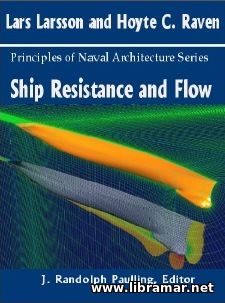 One of the most serious problems of contemporary naval architecture is the correct prediction of the resistance of the newly developed designs at the earlier stages of the project. At the time of the ordering of the new vessel, a contract that contains the technical specification is signed between the yard and the future ship owner. Among the most important specifications is the contract speed of the ship, i.e. the speed attained to the particular power consumption during the sea trials carried out straight after the delivery.
Subject trials are supposed to be carried out under the ideal weather conditions. However, in the real life numerous corrections have to be made to the influence of the various environmental factors. In case corrected speed of the vessel appears to be lower than the one specified in the contract, the shipyard will have to pay a penalty to the ship owner, and this penalty will mainly depend on the difference noted between the contract speed and the speed achieved during the trials.
And, should this difference be too large, ship owner may even refuse to accept the newly built ship. This volume covers all aspects of the ship resistance and flow, including the governing equations, resistance decomposition, types and proof of similarity, flow around the ship hull. experimental prediction of the hull resistance and its numerical prediction and others.
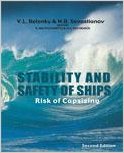 A new, revised edition of the book; it's content is based on the revised content of the original edition subjected to serious revision to correct the existing errors and also to update the text part. It comes quite clear from the thorough review of the established international/national practices of stability regulation that the development of the associated standards has been initially commenced by the leading experts working in the field of naval architecture.
The ultimate objection of setting up the technical standards that pertain to the stability of the vessels was to ensure the safe operation of the vessels and eliminate the possibility of their capsizing. The materials presented in this volume are arranged in two big parts addressing the probabilistic approach to the ship stability and also risk assessment and dynamics of ship's capsizing.
While the first part of the volume is mainly dedicated to the philosophy of the probabilistic evaluation of ship stability/safety plus of the loading and environmental conditions, its second part covers the equations for the non-linear motions of the ship, capsizing of the vessels in regular beam, quartering and following seas, different factors commonly affecting capsizing, motions in irregular seas, capsizing probability and other aspects. The appendix at the end of this volume has been fully dedicated to the Nechaev method.
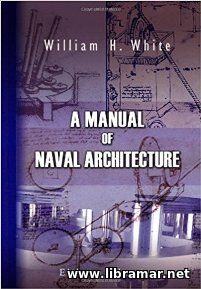 One of the classic and rare books on naval architecture. The original edition of the volume was published back in 1877, the content of that one grew out of series of excellent lectures read at the RNC, i.e. Royal Naval College. The book was prepared and presented in popular language to make the content accessible to the beginners. The mathematics used throughout the book is of simplest character.
The explanations of the terminology and fundamental mechanical properties have been provided. The author of the manual avoided going too deep into theory and such approach allowed the material be understandable to everyone. The book is divided in to several chapters covering literally all important aspects of naval architecture, starting from the displacement and buoyancy of the vessels, tonnage including early and modern measurement systems, relevant tonnage legislation and rules such as Corinthian, American, Suez Canal, Danube and others.
The ship stability is addressed in detail together with oscillation of the hull in still water and among waves. The strains commonly experienced by vessels and methods of observing pitching/rolling motions, strength of the ships and structural arrangements are also covered. Particular attention is paid to the materials used for ship construction including steel, iron and wood, hull resistance, sail and steam propulsion, steering and many other topics.
 A good and useful practical publication providing readers with the tips on proper draft surveys including trimming calculations and other matters. The volume has been arranged in six separate chapters each of them covering one particular issue related to the draft surveys of the ships. The book opens with the chapter addressing the six-sided draft - it will give readers some basic introduction to the subject.
The second chapter is dealing with the process of draft surveying in general. The remaining chapters of this publication address the trimming, hogging and sagging of the ship's hull, controlling the drafts of the vessel, and maximum drafts. Though the publication is quite compact and the author does not go too deep in the theory of the process, it covers the most important aspects and mainly concerns with the practical application of the theoretical information.
That is the reason why we can recommend this volume not only to the students of naval architecture and relevant disciplines but also to the practicing specialists such as the marine surveyors, naval architects, and all others - all of them will definitely find the content of the publication useful for their day to day work.
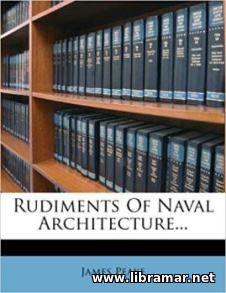 This is one of the oldest publication on naval architecture. Published a century ago, it was originally intended for use by the beginners. The chapters of the volume are covering all important aspects of naval architecture. Though released so many years ago, the book is still very useful and practical for the students since the theoretical information contained in its pages retained its topicality.
In the opening chapter of the book the author introduces readers to the main definitions used in the naval architecture, such as the floating bod and displacement, as well as the basic calculations. The second chapter is devoted to the Sterling's Rules, while the third one deals with the method of applying these Rules... The list of chapter titles and topics covered therein is quite long, but in short we may say that the author managed to embrace absolutely all areas of naval architecture science that shall the future naval architects shall be aware of as necessary.
That is why and based on the numerous positive feedbacks received from all parts of the world, we would definitely find it reasonable to recommend this classic publication to every single student of marine related disciplines willing to get a good understanding of the fundamental principles of naval architecture, ship design and construction.
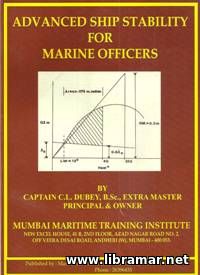 This is a sort of treatise on ship stability specifically written to be used by the ship officers. The material of this volume was prepared by one of the well recognized experts who did his best to provide all marine officers with ready reference source covering all important aspects of ship stability. Traditionally for all books on naval architecture and ship stability, the content of this one starts with the fundamental formulae of naval architecture and basic problems.
There is a separate chapter devoted to the classic Simpson's Rules - even in a world of computers it is still very important to understand the underlying principles. The next several chapters of the publication concentrate on the list and trim of the vessel, associated problems, righting lever, moments, and changes occurring to the trim as a result of the change in density. The dry docking of the ships is discussed in the following chapter.
The author gives detailed and clear explanations on the stability curves, ship hull coefficients, explains the inclining test basics and procedure, covers the grounding problem and, in total, provides readers with nearly everything the may need to be aware of when working on board seagoing ships.
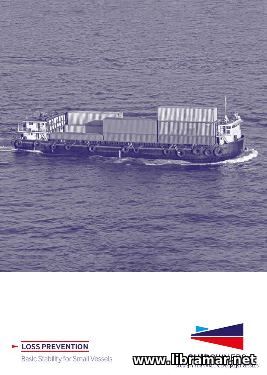 Here is one of the most useful volumes of those making the whole Loss Prevention series. The document is dealing with such critically important aspect of ship handling as the stability, applied to the small ships. The book opens with some introduction and the basic information concerning lack of proper understanding of the ship stability criteria together with the possible consequences.
The authors have addressed the key principles that should be observed as necessary - failure to do so would eventually result in the loss of stability. Such principles include but are not limited to the container heights and weights, overloading of the vessel, FSE, standing for the free surface effect, derricks and cranes, pre-load requirements, stability calculations performed by means of the shipboard computers, freeboard reduction etc.
The content of this volume is mainly aimed at the crew members of the dry cargo ships. The main purpose was to provide them with the opportunity to get better understanding of the basics of the ship stability and its determination. Unfortunately, not all crew members of those assigned responsibility for loading operations possess necessary knowledge of the subject. The appendices supplementing the main part of the volume give some additional information.
|







